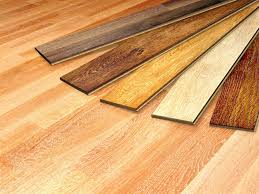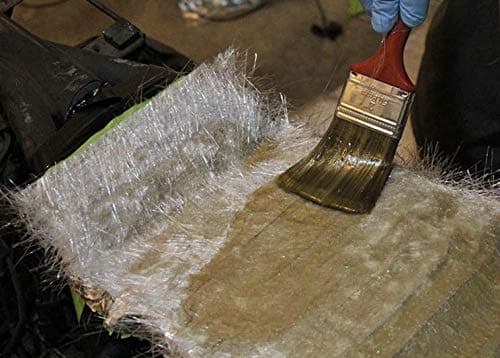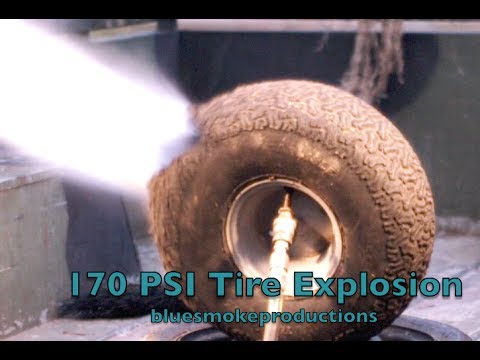
|
Barry's
Tire
Tech This is a series of articles on the technical aspects of tires, their care and usage. My primary purpose in these articles is to help people understand tires and thereby reduce the risks we all face every day. ..........and since tires is just about the only thing I know about.......... Please drop me a note if you have a topic you want to see: Barry@BarrysTireTech.com |
|
The Physics (and Math!) behind Tires - Part 1: In the next series of articles, I am going to go over how tires work from the point of view of physics. That means Math!! I do not know how many articles this will take, but I will modify this sentence when I am finished. |
|
First, tires - at least the ones we usually associate with the term and the ones I am going to talk about - are pneumatic, laminated, composite structures. That is they use a compressed gas as a part of what they do; they are formed in layers; and those layers are a combination of a fabric and something that surrounds that fabric. |
|
Pneumatic: To the right are 3 objects that are familiar pneumatic devices. They all need a compressed gas to do what they do. In these devices, air is the compressed gas, but it could be any gas. Don't get confused with hydraulics - liquid powered devices. Usually some form of oil is used, but sometimes, it's water. And for some reason, steam powered machines - although steam is a gas - is considered as a separate category. I suppose that's because steam requires an outside heat source - just as an internal combustion engine also uses a heated gas but isn't considered a pneumatic device. |



|


|
Laminates & Composites These 2 terms always seem to come together, even though they have different meanings.
To the left is laminated flooring - a wood on wood laminate. This is not a composite! The other photo is of someone applying polyester resin to a fiberglass mat. This is both a laminate and a composite. |
|
Tires are all about endurance. They have to rotate many, many times in their lifetime - and, of course, the number of revolutions depends on what kind of tire we are talking about. Surely it's obvious that passenger car tires have to go through many more revolutions than racing tires do - and airplane tires are different than tractor tires, etc. The key physics about endurance is "Fatigue". Here is a link to the Wikipedia article on Fatigue (material). |

|
|
The basic principle here is that if something is repeatedly subjected to stress, then relaxed, it will eventually fail, even though the stress is way below the ultimate breaking stress. And the time to failure is best described by an S-N curve (S = stress, N = number of cycles to failure). Here's one for rubber. Note how the graph is semi-log (increasing by a factor of 10 along the X-axis, and regular along the Y-axis. This is the normal way S-N curves are done.
To put this in perspective, a passenger car that goes 100,000 miles cycles 80 million times. Yes, 80 MILLION (1 million = 1.00E+06). Notice that means the data point for 100,000 miles is beyond the range of the graph. What this means is that the components in some kinds of tires have to be many times stronger the calculated value for a single cycle. |
|
So what about that single cycle? What is it? Well, we know what the base stress is - inflation pressure. And for that we turn to "Thin-walled Pressure Vessels." Here is a link to the Wikipedia article on Cylinder stress. About a third of the way down the page is the "Thin-walled Assumption". The formula for the stress is shown to the right. While this formula is for a tube with a circular cross section, I hope everyone recognizes that the formula for a tire would just be a more complicated one - but of a similar form. Meaning that we could calculate the strength needed to contain the inflation pressure. |
Where: σθ = stress in the cylinder walls P = pressure inside the cylinder r = radius of the cylinder t = thickness of the wall of the cylinder |
|
L = K * P0.5 * Sd1.39 * (Dr + Sd) Where:
Whew! That formula is something else! |
And the last item to finish this is: What is the cyclical stress? People much smarter than I developed a formula to describe the load carrying capacity of a tire. It is shown to the left. Please note: This formula (or some variation) is the same one used to calculate the load tables. We now have everything we need to calculate how strong the plies in a tire have to be. All this has been known for a long time and as a result, you will find very few sidewall failures in tires. |
|
Consequences:
|

|

|
|
|
Barry's Tire Tech - Main Page |
